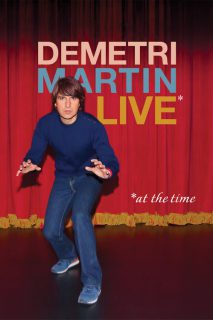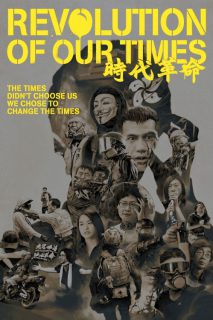
- Year: 2016
- Released: 19 Nov 2016
- Country: Romania
- Adwords: 2 wins & 1 nomination
- IMDb: https://www.imdb.com/title/tt6432808/
- Rotten Tomatoes: https://www.rottentomatoes.com/m/planeta_petrila
- Metacritics:
- Available in: 720p, 1080p,
- Language: Romanian
- MPA Rating: N/A
- Genre: Documentary
- Runtime: 80 min
- Writer: Andrei Dascalescu
- Director: Andrei Dascalescu
- Cast: Ion Barbu, Catalin Cenusa, Mihai Barbu
- Keywords:
 | 8.1/10 |
Planeta Petrila Storyline
In Petrila, a coal mining town in Transylvania (Romania), an ex-miner turned artist and activist uses art and absurdism to stop local authorities from demolishing the historic buildings of the oldest coal mine in the country after its’ closure in 2015, at EU’s recommendation. His quest is not only to preserve the history and the identity of his hometown, but also to find new ways of keeping the community from irreversibly falling apart.
Planeta Petrila Photos



Planeta Petrila Torrents Download
| 720p | web | 740.39 MB | magnet:?xt=urn:btih:967D46C66E19699467BCC2E7143C37C383C36EAF | |
| 1080p | web | 1.34 GB | magnet:?xt=urn:btih:64F92621087B9B687B3B18635C8AB4CE6993F807 |
Planeta Petrila Subtitles Download
Planeta Petrila Movie Reviews
Oh Petrila, My Sweet Chinchilla
Nobody can accuse Dascalescu’s documentary of being without flair. I still recall, almost a decade ago, emerging from a forest road into Zlatna, a mining community some 200 km apart from Petrila: the picture perfect image of desolation was shocking. So to the extent that ‘Planeta Petrila’ celebrates the birth of some form of (artistic) life from such wreckage, it is a great success. However, it feels detached from the wider community of the town and in not taking an inquisitive stance on the viability of life in former coal mining ‘colonies’, it shies away from the bigger social and environmental questions.
Ion Barbu, ex-miner, or rather ex-mining topographer, current artist/activist/do-it-all is a veritable one man show. His distinctively spirited visual designs and Banksy-esque witticisms are plastered around Petrila, contrasting the dying pulsations of the coal mining industry. Alongside him – or rather, in a parallel universe – Catalin Cenusa leads one of the last mining teams to work the deep shafts of Petrila. The contrast between the two is stark and Dascalescu recognizes this, but never broaches the issue: Barbu is looking for Petrila’s continuity beyond mining, while Cenusa is intent on working the coal for as long as possible. The latter’s fight is a solitary one, with just one hundred people left of more than four thousand still earning their livelihoods from the Petrila mining exploitation.
The pressure to close the mines comes from the European Union, or rather the funds contracted by the government from the EU to ‘green out’ the area. It’s somehow funny that in a documentary about mining, where the effect of mine closures are part of the focal point, I don’t recall hearing the words ‘environmental impact’ or ‘global warming’ even once. If they were mentioned, it was more incidental. Instead there are clear indications as to what Dascalescu feels is the uninterested involvement of local and national authorities in the whole matter. Authorities are accused to have bypassed required consultations with communities of places like Petrila, in a desire to ensure European financing and, presumably, monetize some obscure vested interests in the greening and demolition process. The bigger issue though is not so much what the community wants to do, because the movie provides no sense of who the community is; it simply stays close to Barbu and to the involvement of out-of-town NGOs in preserving a cultural art space in some of the mine’s historic buildings.
I have no idea what the artistic value of Barbu’s work is, but it’s soulful stuff. Planeta Petrila provides a melancholic frame for the bitingly ironic and rightfully frustrated artist, ramping his desire for cultural renewal to overdrive. Barbu’s bubbling personality and sharp sense of humour lighten up the gray realities of the town. From colourful graffitis to underground theater festivals, it’s all happening in Petrila for the first time in…perhaps ever. The strong attachment to the heritage of the place, its silent suffering and the inherent sadness when it is all about to end come into focus in the best moments of Dascalescu’s movie. The footage from inside the mine shafts, where Cenusa (translation: “ashes”) and his crew really shuffle off their mortal coils, strengthened by the satisfaction of their work and some self-deprecating humour, are a testament to the importance of purpose and of being good at your craft, albeit a tragically outdated one.
In all this, the documentary could have done with more focus, because it feels disjointed in its two protagonists and in its desire to establish itself as activist cinema. My main gripe with Planeta Petrila is that it propagates that against which it preaches: the imposition of foreign interests on socially impaired communities. The fact that Dascalescu does not portray a balanced view of events, with next to no input from political and administrative figureheads, is not an issue; a documentary need not be a factual debate. But a lot of the time it feels like the activism caught on camera is a cause in itself, a self high-five, if you will. Planeta Petrila never successfully makes the case it implicitly supports at the outset, as articulated by Barbu: art can be Petrila’s redemption. It looks more like art can and is Barbu’s redemption, whose stubborn persistence, supported by NGOs, ensures the creation of a cultural space to keep the once socially-defining mining heritage of the community alive. In terms of how the people of Petrila will go on, other than desert the place, there are no answers, because the question is not being asked. The community seems voiceless, with Barbu, whose son travels the world on a motorbike, too cosmopolitan a figure, and Cenusa too far in the background and too intent on ensuring his livelihood.
Perhaps my skepticism is getting the better of me here, but that’s what I would have wanted to see more of, to elevate the movie beyond an expression of art for art’s sake. For what it’s worth, Planeta Petrila is distinctive and paints in beautiful colours against the grey backdrop that is (was) the mining industrial complex. It’s the kind of place I would like to emerge into when next traveling the forests around Zlatna.



